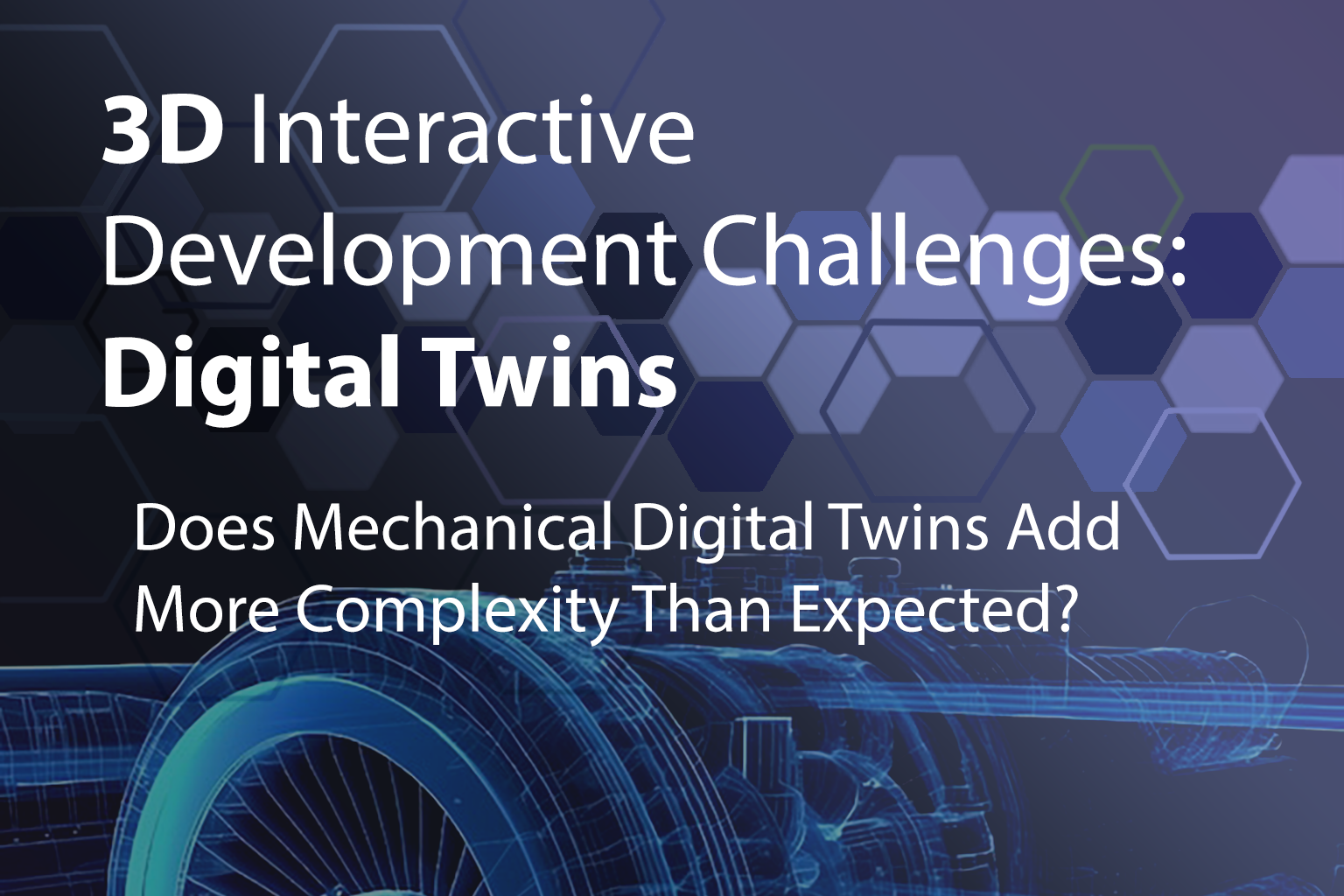3D Interactive Development Challenges: Digital Twins
Do Mechanical and Engineering Digital Twins Add More Complexity Than Expected?
 On a basic level, the primary tools used for Digital Twins remain similar to those in other industries we have covered in past posts. Whether you are working in manufacturing, automotive, aerospace, or energy, the process still starts with creating detailed 3D models, integrating data streams, and providing visualization tools for monitoring and interaction. However, when it comes to mechanical and engineering digital twins, the variations required to meet industry-specific needs introduce an entirely new layer of complexity.
On a basic level, the primary tools used for Digital Twins remain similar to those in other industries we have covered in past posts. Whether you are working in manufacturing, automotive, aerospace, or energy, the process still starts with creating detailed 3D models, integrating data streams, and providing visualization tools for monitoring and interaction. However, when it comes to mechanical and engineering digital twins, the variations required to meet industry-specific needs introduce an entirely new layer of complexity.
Unlike architectural visualizations or entertainment applications, mechanical and engineering digital twins often require the integration of highly accurate physics libraries, real-world sensor data, predictive maintenance models, and AI-driven analytics. The tech stack becomes significantly more varied, combining machine learning models and LLMs for predictive behaviors with advanced physics engines capable of simulating real-world forces, material fatigue, and environmental factors.
How do you manage the growing complexity of tools and libraries required to develop accurate and functional engineering digital twins?
Project setup is only the beginning. Every new requirement—whether it is a more precise stress analysis, integration with IoT sensor data, or updated predictive maintenance algorithms—adds to the development workload. These variations not only increase the time needed to implement and test changes but also make it harder to maintain performance and ensure accuracy across multiple systems.
How do you balance the demand for accuracy and real-time performance when working with complex simulation and AI-driven models?
The challenge doesn’t stop after deployment. Digital twins are living systems, evolving alongside the physical assets they represent. Each iteration demands new data integrations, model validations, and simulation updates. Managing these constant updates while maintaining system stability and ensuring every stakeholder is working from the latest version often turns into a full-time effort.
What is the biggest challenge you face when managing ongoing updates and iterations for engineering digital twins?
All of us here at TGS Tech are building Apex Engine to address these challenges directly. Our goal is to simplify the integration of diverse technologies, streamline project setup, and provide a unified environment for simulation, real-time monitoring, and collaboration. Whether you are building digital twins for mechanical systems or complex engineered environments, Apex Engine is designed to help you accelerate development and deliver accurate, scalable solutions.
If you have faced similar challenges, we would love to hear about them. Share your experiences in the comments and join the conversation.
#3DDevelopment #DigitalTwins #Engineering #MechanicalEngineering #Manufacturing #Simulation #InteractiveApplications #ApexEngine #AIIntegration #PhysicsSimulations #PredictiveMaintenance #Innovation #ApexEngine #TGS #TGDSTech